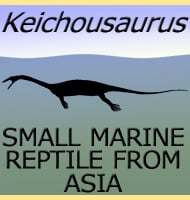Keichousaurus
In Depth Keichousaurus looks like a miniature plesiosaur, and indeed many have looked into the possibility that it may either be a direct ancestor, or representative of an ancestral form that led to the evolution of the giant plesiosaurs. As well as resembling the later plesiosaurs, Keichousaurus may have moved like them too, using their … Read more
